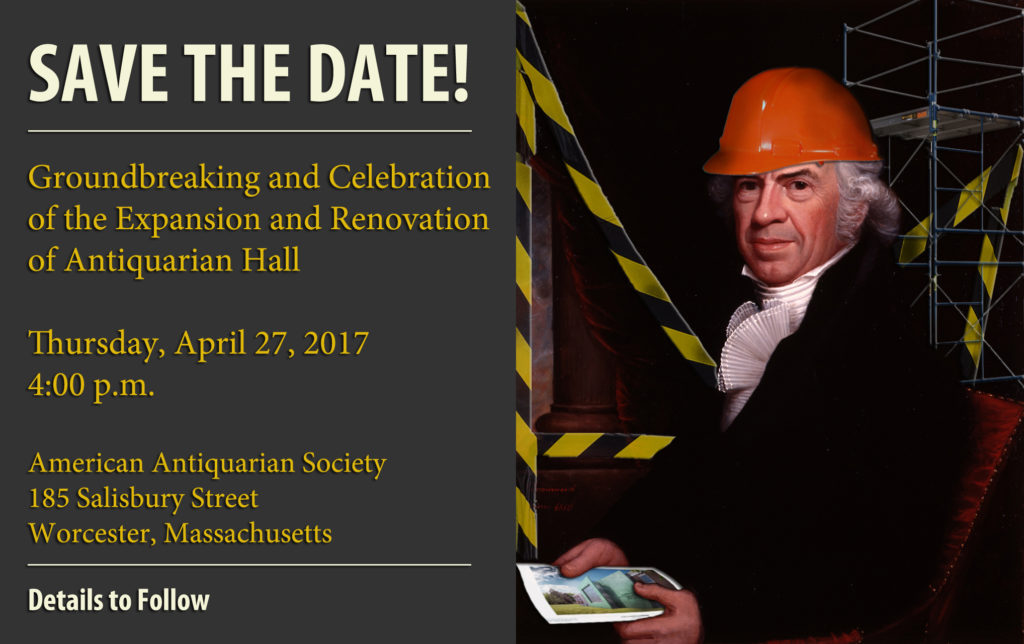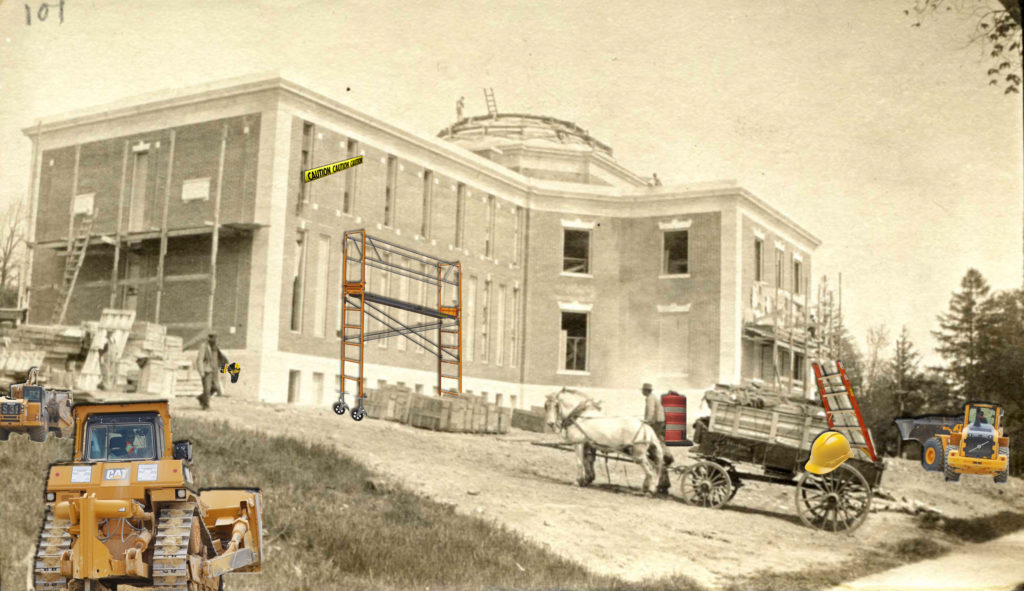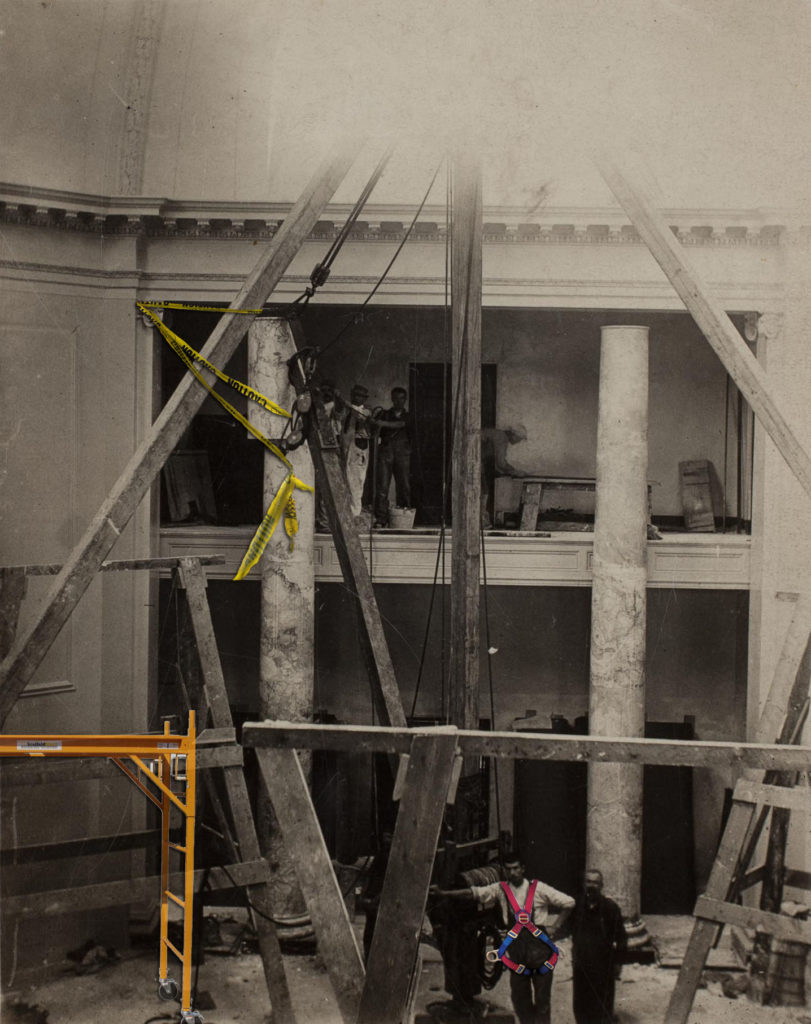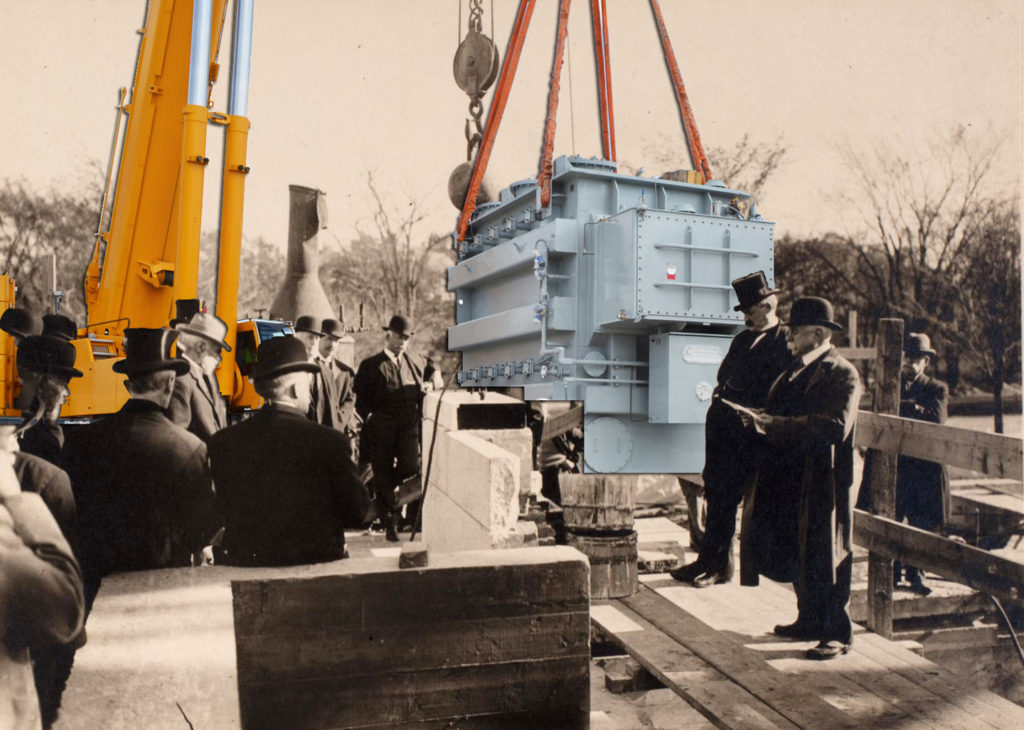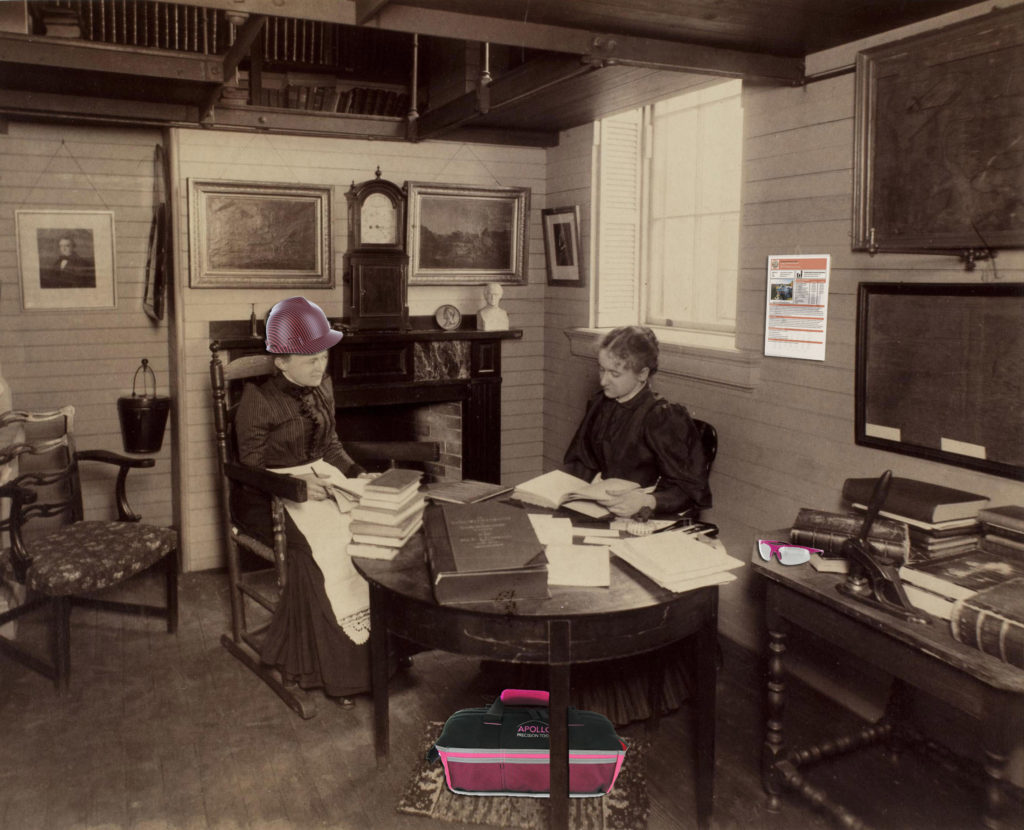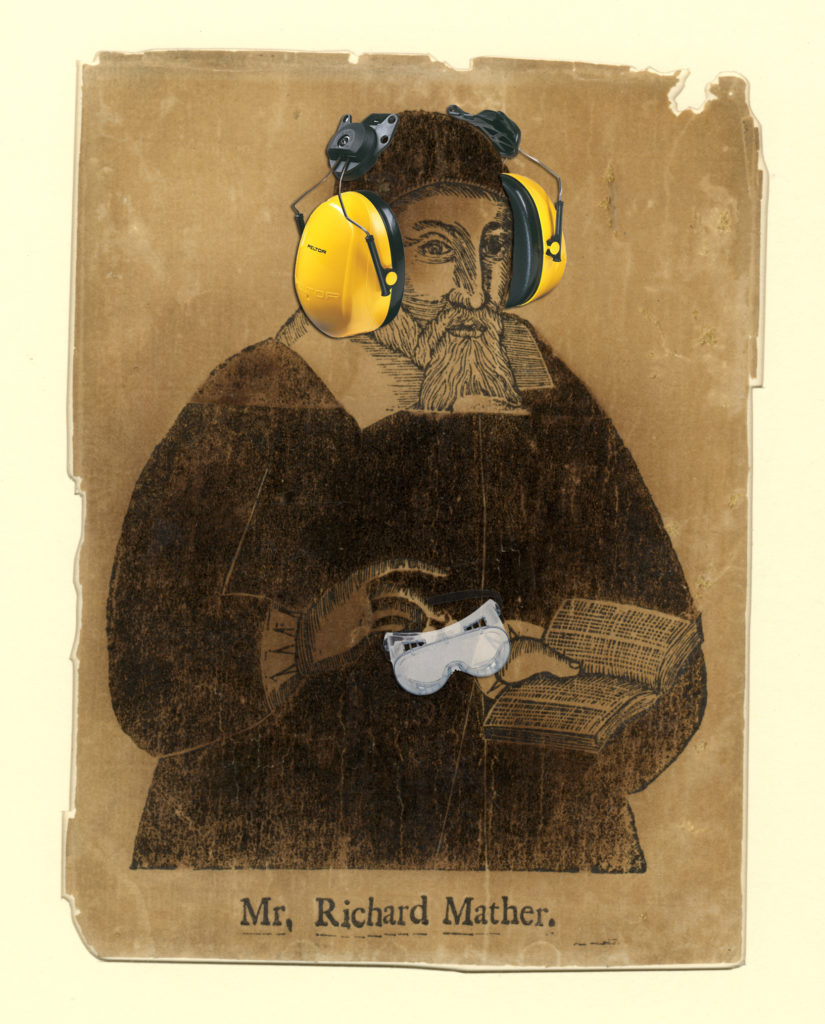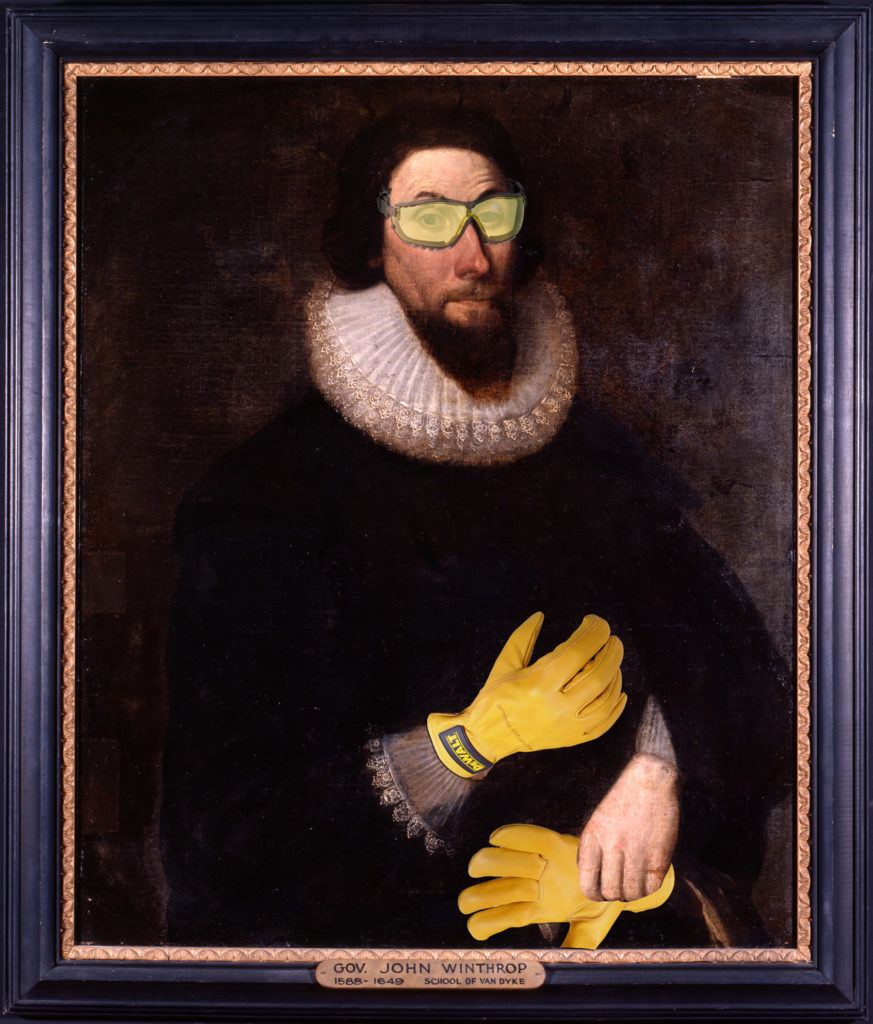
When the Rijksmuseum was being renovated over a decade ago, I received a postcard featuring a spirited version of Rembrandt’s oil on canvas, “The Night Watch.” I found the playfulness of the image, an icon for the famous museum in Amsterdam jazzed up with construction equipment, so compelling that I kept it. An article appearing in the Boston Globe just before this year’s Superbowl also demonstrates that this experimentation with collection items doesn’t necessarily have to be tied to construction projects. Throwing shade (or highlights, drop shadow, whatever image-effect you prefer) is a fitting response for any number of special occasions!
In the September 2016 issue of the Society’s newsletter the Almanac, we announced our building expansion and renovation project. The new “face” of AAS will include a three-story, 7,000-square-foot addition to Antiquarian Hall, as well as a multipurpose room (for workshops, seminars, and class visits), expanded and renovated infrastructure (including climate-controlled storage in the older stacks) and a new conservation lab. When the Society announced the groundbreaking event (taking place on April 27) for this upcoming work to Antiquarian Hall, and we were in the market for an image for the “Save the Date” email, I pulled out the Rijksmuseum postcard and we brainstormed some distinctively AAS images.
We here at AAS can be, on the whole, a group of purists. Rarely will you find any of us cranking up Photoshop to retouch/enhance/alter any of our collection items digitally. Having spent a decade working with digital surrogates and permissions, for instance, I would be the first to tut-tut suggestions of post-processing. We felt in this case, however, it was in good fun and has received the blessing of the curator of graphic arts, Lauren Hewes, whose curatorial collection was unabashedly ransacked for this project.
Can I park my Caterpillar on Regent Street?
Former AAS President Waldo Lincoln’s photographs, currently stored scrapbook-style in the Society’s archives, provide an unparalleled opportunity to look at visual documentation of the construction of the third AAS building in 1909 and 1910. Here presented with tractors and backhoes (and an odd tool or two), is an early view of Antiquarian Hall from Park Avenue.
This site under construction
The dome also proves to be an easily recognized visual of Society-structure, so we experimented with another Waldo Lincoln photograph, this time in the reading room with the early twentieth-century assembly of the tapered columns of marble that flank the alcoves and some workers (one of whom now dons a cross-over safety harness).
Nothing to see here
My personal choice is the remake of the “Laying of the cornerstone, 1909” by Wohlbruck Studio with Charles Francis Adams (right front in photograph) delivering his address with President Waldo Lincoln (of photojournalist-glory, see above two images) leaning beside him. However, I am retitling it, “Laying of the new state-of-the-art-infrastructure, 2017.”
Remember the ladies
The third building was easily the one most-documented during its construction, but the second building boasts an impressive archive of photographs as well. This image of AAS cataloger Mary Robinson Reynolds and an unknown assistant cataloger was possibly photographed by Society treasurer (and master scrapbook-assembler himself) Nathaniel Paine. Pinned to the wall is the construction update report prepared by Pinck & Co., the company acting as owner’s representative for our current expansion. We imagine the pair here is discussing the plan for shifting many linear-feet of collection material for the forthcoming work.
Can you hear me now?
John Foster’s second state of the woodcut of Richard Mather (ca. 1670), which is considered the first portrait print produced in America, is another emblematic and oft-reproduced AAS image. We’ve replaced the small eye-glasses in his right hand with a pair of safety glasses and included a set of cap mount ear muffs (heavyweight, of course).
All work and no play makes John a dull governor
Another top choice was the anonymous oil on canvas (ca. 1630/1691) portrait of John Winthrop, an early Massachusetts Bay governor, which has surveyed AAS researchers since it was bequested to the Society in 1830. The painting is often the subject of comment by art historians for its skillfully painted hands. During construction we’ll be sure to keep them covered with a pair of Dewalt gloves.
The Man and his plans
Hands-down (gloved or not) the image most associated with AAS is the Ethan Allen Greenwood oil on panel portrait of founder Isaiah Thomas done in June 1818, which currently hangs near the Society’s entrance (overlooking the reception desk); Thomas sat six times for this painting. We may revisit this lively portrait over the course of construction, but for this first iteration, in addition to his safety hat, caution tape, and scaffolding, we’ve swapped his published History of Printing (1810) with the prospective exterior façade rendering done by Samuel Anderson Architects in June of 2016.
Now primed with all these improvement-inspired-images, we hope you will consider joining us for the groundbreaking (and celebration!) of the expansion and renovation of Antiquarian Hall, which will be on Thursday, April 27, at 4:00 p.m. We will continue to post details on social media and on our website!
